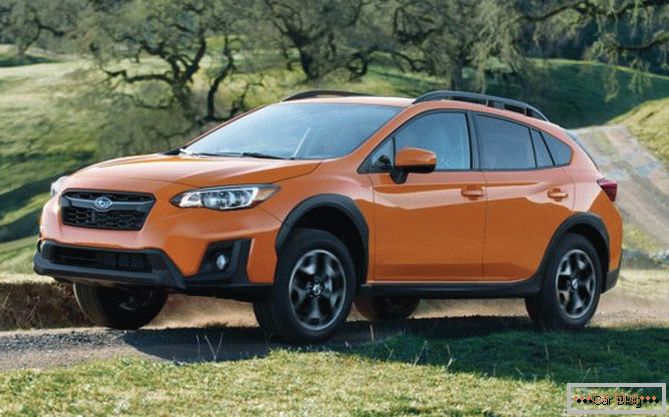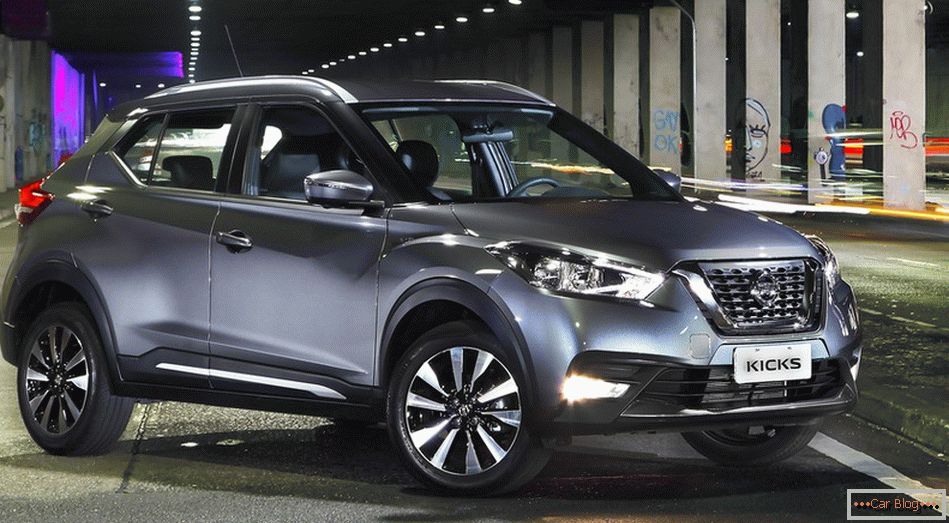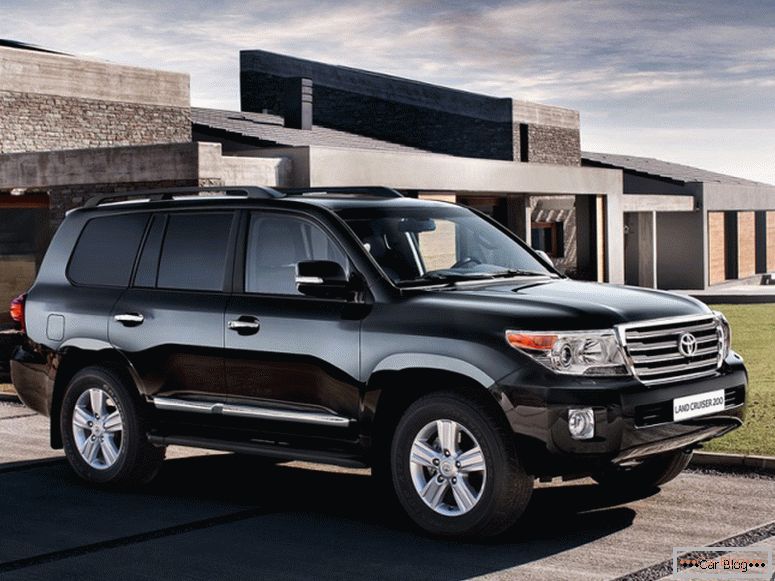When buying a new car, the future car owner seeks to choose the most comfortable vehicle for themselves. At the same time, the estimated characteristics include not only fuel consumption or the size of the trunk, but also the type of transmission. The question of what kind of drive is better, front or rear, and maybe full, becomes urgent.
Drivers can appreciate all the pros and cons of these layouts after long periods of operation of various machines. We will try to identify the maximum number of features for cars with different base axles.
Content
- 1 Front axle drive
- 2 Drive to the rear axle
- 3 Drive on both axles
- 4 Personal preferences
Front axle drive
New models of cars produced in our country since the second half of the nineties, are offered to the buyer with front-wheel drive. This is due to the considerable efficiency and economy of the structure. Due to the fact that there is no need to transfer the rotation back, the transmission and power plant are located in the engine compartment.
This position frees up useful space in the car. Budget layout while retaining all the positive properties of cars.
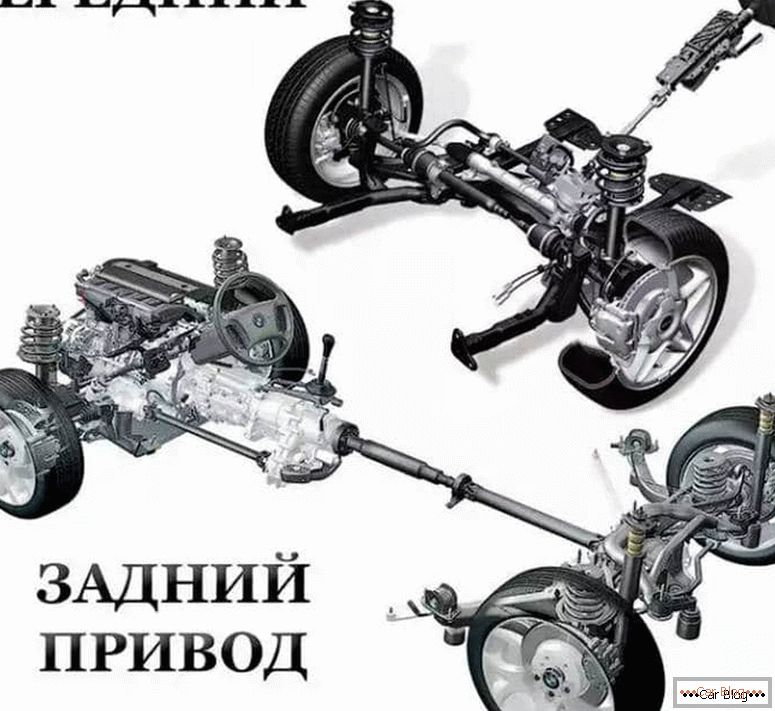
In almost all cars with front-wheel drive, the motor has a transverse installation, which reduces the number of intermediate elements when transmitting force to the wheels. This increases the reliability and maintainability of components and blocks.
pros:
- The compactness of the product assumes its affordable cost. Also, the design and construction of front-wheel drive cars is cheaper than other analogues with full or rear-wheel drive.
- The car gets an advantage on slippery roads during bad weather. The mass of the power plant provides a better grip with the road surface, the driver has the ability to more effectively brake and maneuver. The car puts less, permissible speed to ensure movement in extreme weather conditions can be slightly higher.
- The car loses the tunnel, passing through the entire cabin and hiding the drive shaft in rear-wheel drive or all-wheel drive cars. This frees up space for a comfortable location.
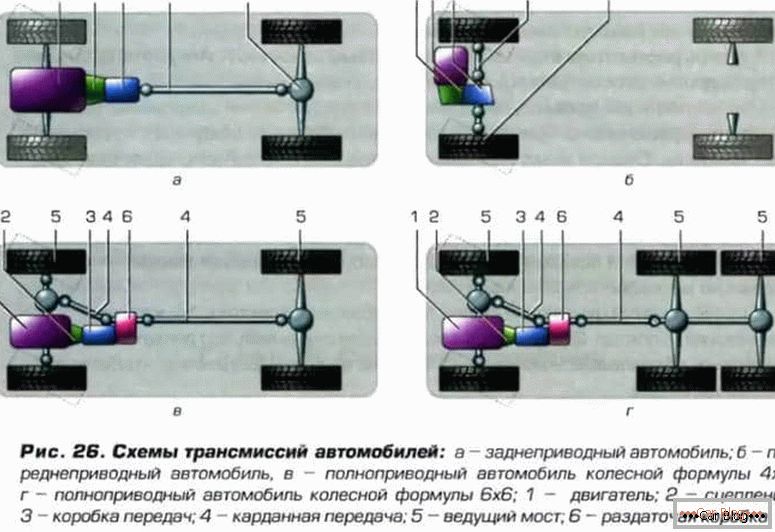
Minuses:
- Due to the fact that you have to drive wheels during a maneuver, this fact imposes certain restrictions on the functionality. The angle of rotation will be slightly lower, and each mechanism involved in the rotation of the wheels at an angle will also have increased wear.
- It is considered that the car with front wheel drive is more difficult to pull out of the drift by classical methods. This is due largely to the operational manner of driving novices. Instead of adding gas at the entrance to the skid, they often press the brake pedal, which aggravates the situation. Therefore, at first, when switching to this type of transmission, it is necessary to practice management in emergency conditions.
- Due to the fact that the main drive units are located in the engine compartment, it affects the wear of the brakes. During the speed quenching, the mass of the car is transferred to the front zone, such an operation rather wears down the brake components mounted on the axle under the engine. In some cases, it is often necessary to change the front brake pads.
- During acceleration, when the mass moves back due to inertia, the degree of adhesion to the road surface decreases on the driving wheels. This phenomenon contributes to a little slip. Because of this fact, sports cars are mostly equipped with rear wheel drive.
However, the number of “pluses” exceeds “minuses”, therefore this design does not lose its popularity.
Drive to the rear axle
In most cases, this design is conceived by the manufacturers when the engine is in the front position, as well as in its longitudinal installation. The transmission of rotation from the motor is performed using a propeller shaft.
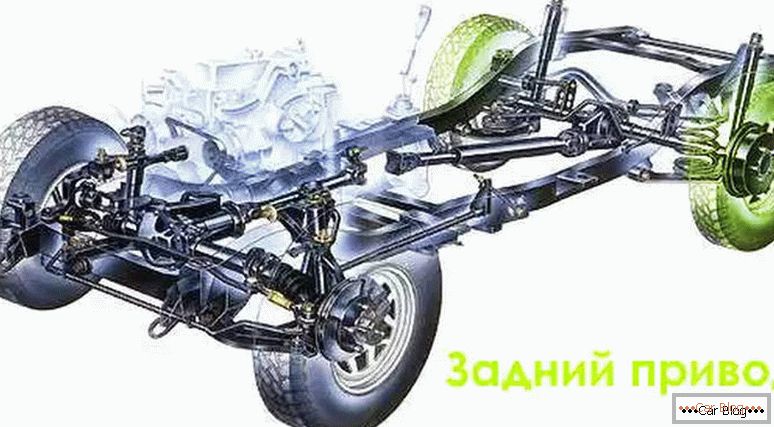
If the design involves the use of simplified elements, then the total cost to the automaker will cost significantly less. However, when the most modern technologies are used in this version of the transmission, the final price tag will be significantly higher than front-wheel analogues.
Early car models were rear wheel drive. Difficulties engineers caused the combination of the drive wheels and their ability to turn. Therefore, you can hear that this design is called "classic."
pros:
- Using a rear axle drive provides unloading of the front wheels. Due to this installation, there is a redistribution of mass in the vehicle, which improves their handling and creates more uniform tire wear.
- The rear-wheel drive has the advantage of high productivity, because due to inertia, the mass during acceleration loads the drive axle, which reduces wheel slip, unlike front wheel drive cars. This advantage is fully used by leading automakers of sports coupes and sedans: Ferrari, Lamborghini, Chevrolet Corvette, etc.
- Although front-wheel drive is easier to skid on a slippery road surface, but with it you can level the car by dropping speed, releasing the gas pedal or easily brake. This provides an advantage for beginners, often braking in any emergency.
- When choosing which drive to drift on, motorists prefer the rear wheel drive assembly. In this situation, there is no need to install any additional devices in the form of plates or skis.
- The absence of a drive on the driving axle allows for a larger angle of rotation of the wheels, which reduces the turning radius during parking or other maneuver associated with this parameter.
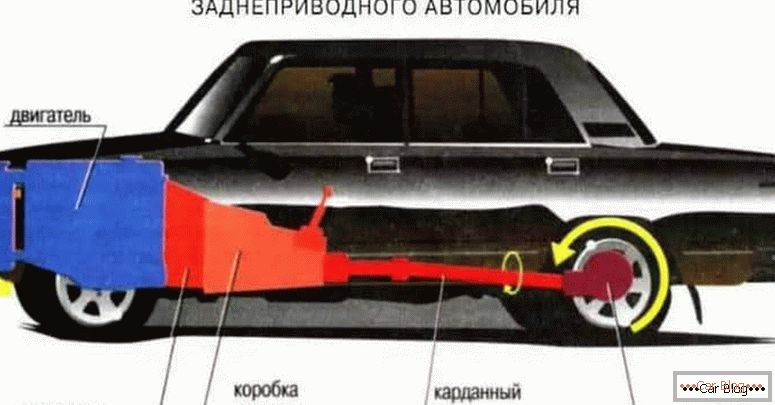
Minuses:
- One of the most obvious signs revealed in the presence of a driving rear axle is a tunnel built in the floor, stretching across the entire car to the rear wheels. In addition to aesthetic discomfort, it creates physical inconvenience for passengers in the back row of seats.
- This type of car is not recommended for traveling in rainy or wet weather. This is due to the ease of care in a skid. Fans of drifting have chosen for this “classic” property. However, automakers get rid of this phenomenon by installing electronic stability control systems. They provide confident driving on the rear wheel drive, even in bad weather.
- During a turn, the car loses power due to the fact that the drive axle forces the vehicle forward, and the front wheels are angled. With this process, more energy is spent on the rotation.

More expensive brands of cars to increase the effective use of motor power have power plants in the rear of the car directly above the drive pair of wheels. This also they get rid of the tunnel in the cabin.
For trucks, in most cases, the rear axle position of the drive axle is assumed. This in a loaded vehicle can increase the load on the driving axle and provide the best contact patch with the road surface.
See also: Repair and replacement of clutch slave cylinderDrive on both axles
When analyzing which drive is better: rear, front or full, you should consider that the latter type has several of its own varieties:
- with constant power on;
- having the ability to force on / off;
- adaptive design.
These layout options provide power transfer from the power plant to each of the wheels. With all-wheel drive provides more productive adhesion to the road surface, especially in bad weather or in areas of rough terrain.
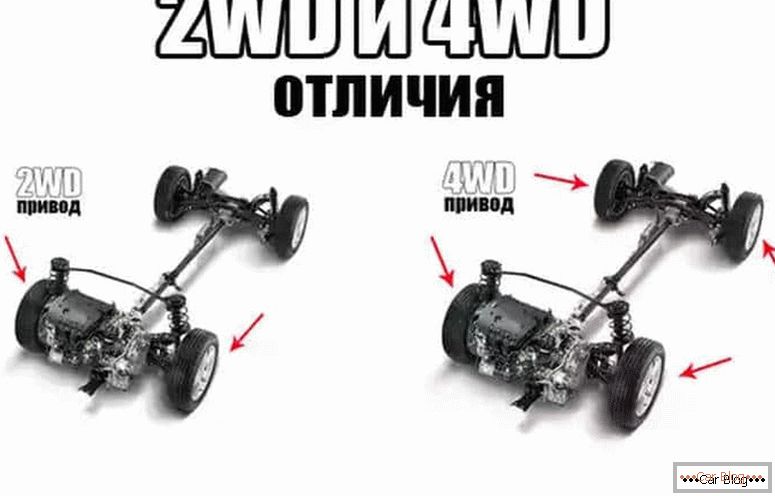
Adaptive The type of front-wheel drive is common on modern crossovers, SUVs and sports cars. This system provides the distribution of torque between the axles depending on the productive load. The vast majority of crossovers are equipped with front-wheel drive, and the connection of the rear one is based on the adaptive principle only during the weakening of the coupling with the drive axle road. In this case, the second axis receives power not in the strict ratio of 50 to 50, but in the parameters set by the designers.
If it is required to independently enable / disable the drive through the transfer case, then the requested one is connectable four-wheel drive. Such a mechanism is implemented in the old model of the domestic "Niva". The main time the car uses the rear driving axle, and if necessary, the driver is able to increase the tensile strength by connecting the second axis.
Constant drive on modern machines can be found very rarely. It is uneconomical in terms of fuel consumption and wear of working units and mechanisms. For urban roads, it is more efficient to use a switchable second axis drive.
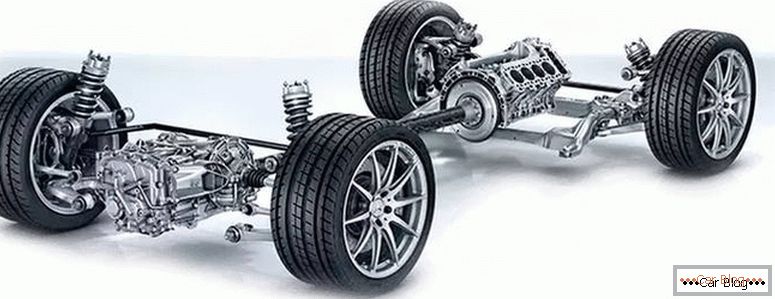
pros:
- The clear advantage of any type of all-wheel drive is increased permeability for the car.
- During all weather conditions, a car with all driving wheels has significantly better handling on wet or slippery roads.
Minuses:
- One of the main negative aspects is the relatively high complexity in design and manufacture, which leads to higher prices for final products.
- The vast majority of models with four-wheel drive, overrun the fuel in comparison with analogues on the same driving axle. The loss is felt in the need for additional rotation of a pair of wheels through various gears and additional intermediate mechanisms.
- Tire wear happens more.
Cars with all-wheel drive, as a rule, are larger than cars with one driving axle.
Personal preferences
In urban conditions and during frequent driving on good roads for a modern car, one driving axle is enough, basically this is the front, even in fairly powerful crossovers. She copes with her tasks in most situations.
Sports enthusiasts choose rear-wheel drive and expensive cars. An example would be the German Volkswagen GTI.
For frequent use of the car on the road, fishing or hunting it is worth thinking about buying a four-wheel drive SUV. If the road will meet roads with high-quality coverage, we recommend taking the car with an adaptive drive. It will effectively distribute power to the wheels and help save money at the gas station.

